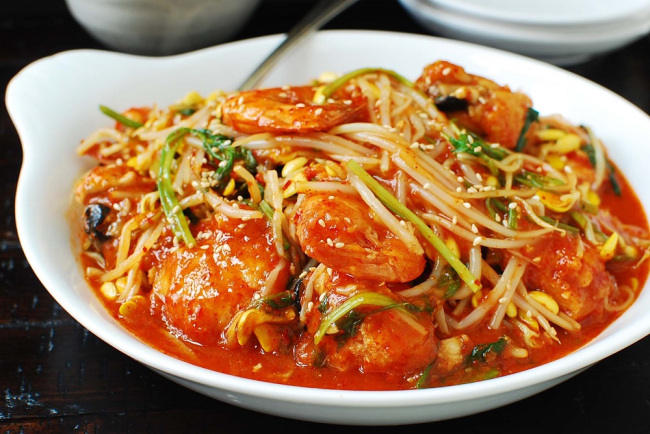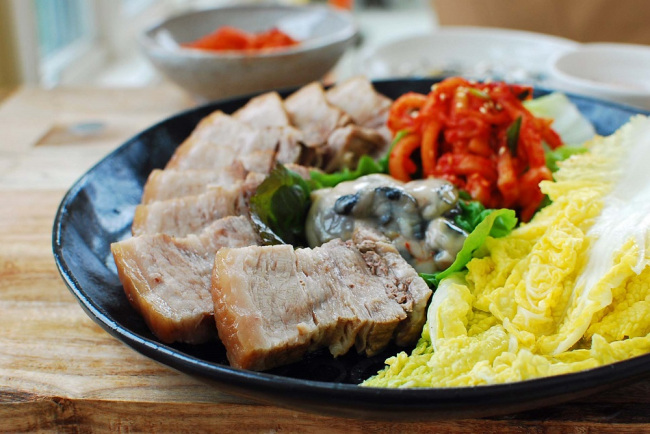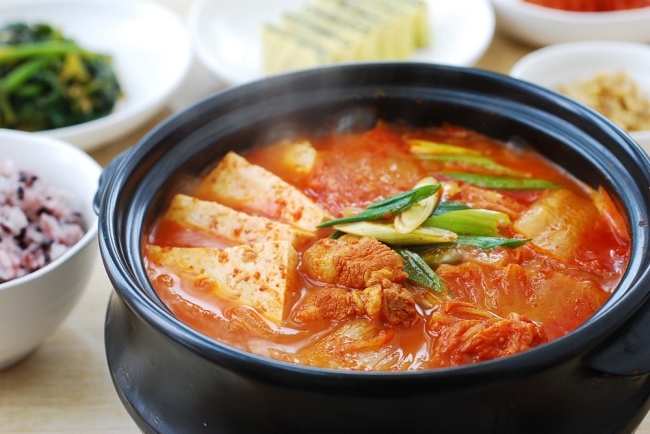 |
| Haemul bap (seafood rice bowl) (Korean Bapsang) |
Water is fine to cook the rice with, but flavorful liquid will add another dimension to the rice. Dashima (dried kelp) broth is commonly used. Boil a small piece of dried kelp for a few minutes to make broth. The water used to soak dried mushroom is also good. If you’re using fresh clams and/or mussels, partially cook them in a little bit of the boiling water to remove the meat, and then use the cooking liquid to cook the rice.
A little bit of lemon juice in the sauce really brightens up the flavor of this rice bowl.
2 to 3 servings
Ingredients:
● 1 1/2 cups short grain rice (standard measuring cup not the cup that comes with a rice cooker)
● 1 1/2 cups water (or dashima broth or other flavorful liquid) 300 grams assorted seafood (shrimp, squid, mussels, oysters, clams, etc.)
● 1 small carrot, thinly sliced
● 1/3 cup frozen peas, thawed
● 2 to 3 caps shiitake mushrooms (soaked if using dried mushrooms), thinly sliced
● 80 grams Korean radish, mu, cut into short match stick
Sauce (Yangnyumjang):
● 3 tablespoons soy sauce
● 2 teaspoons lemon juice
● 1 teaspoon sesame oil
● 1 teaspoon gochugaru (Korean red chili pepper flakes)
● 1 teaspoon sesame seeds
● 1 teaspoon minced garlic
● 1 teaspoon sugar
● 2-3 scallions, finely chopped
Rinse the rice three times by swishing the rice, draining each time. Soak the rice for 20 to 30 minutes. This soaking process is very important for fluffy rice. Drain to make sure the correct amount of water is added.
Clean the seafood, and drain well. Prepare the vegetables.
Mix all of the sauce ingredients together in a bowl.
Place the rice in a heavy-bottom pot, and add the water (or flavorful broth). Cover, and bring the rice to a full boil over high heat. This will take 4 to 5 minutes. Then, reduce the heat to low. Simmer for 5 minutes.
Quickly stir in the vegetables and seafood. Cover, and cook for an additional 7 to 8 minutes. Turn the heat off, and leave the pot covered for about 5 minutes.
When the rice is done, gently fluff up the rice, evenly distributing the seafood and vegetables. Serve with the sauce on the side.






